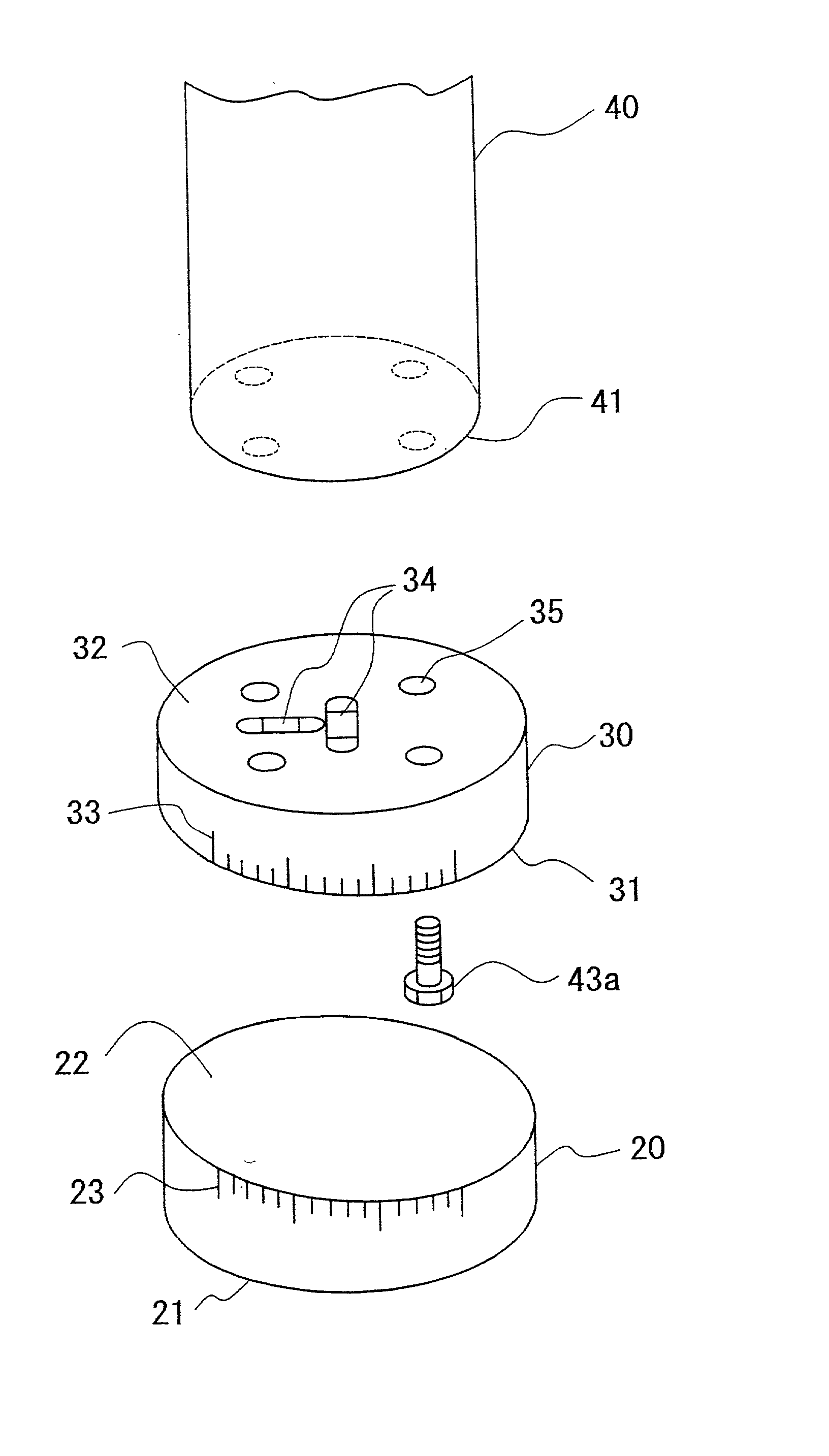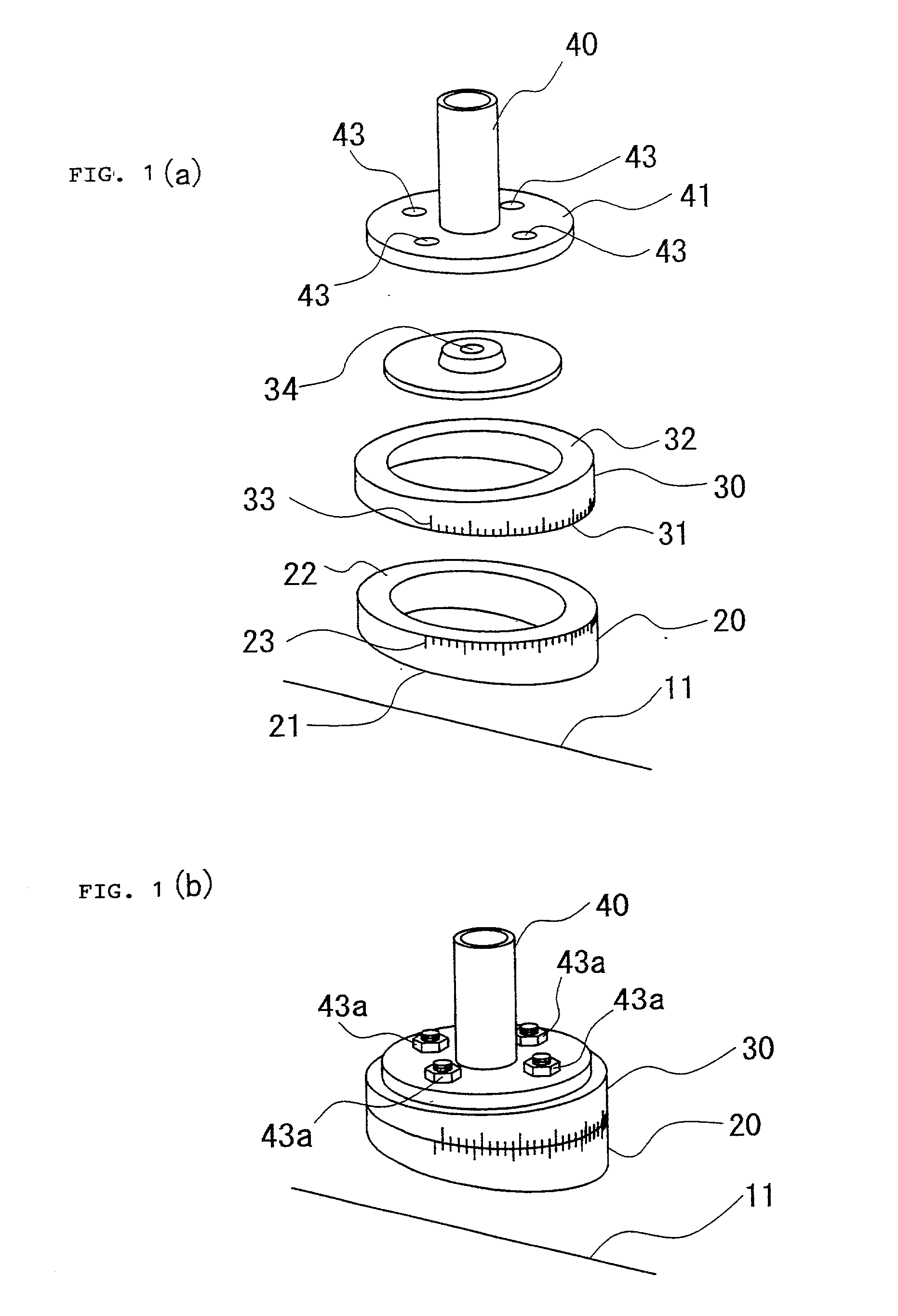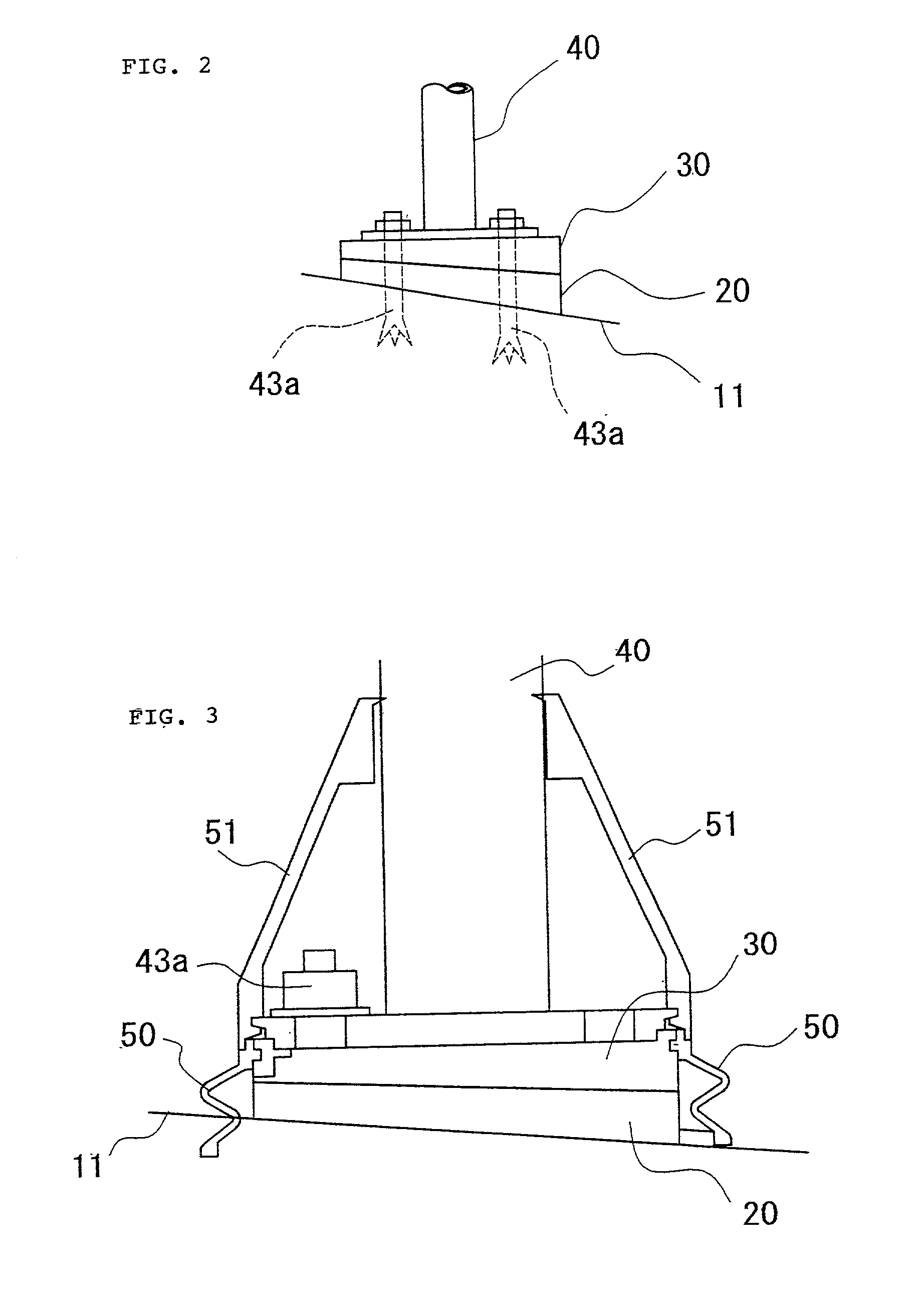Leveling assembly for setting a vertical prop
a technology for vertical props and assembly parts, applied in the direction of applications, instruments, ways, etc., can solve the problems of imposing a big burden on parts suppliers, a big burden on workers, and the difficulty of preparing plural kinds of dais
- Summary
- Abstract
- Description
- Claims
- Application Information
AI Technical Summary
Problems solved by technology
Method used
Image
Examples
first embodiment
[0035] FIG. 1A is an exploded perspective view, and FIG. 1B is an exploded perspective view of a leveling assembly for setting a vertical prop according to the present invention.
[0036] The first embodiment of the present invention is a dais of slope for fixing a handrail pole 40 which comprises an inclined surface setting member 20 set on a slope inclined surface 11 and a horizontal surface forming member 30 supplied as a separate part from the inclined surface setting member 20. The inclined surface setting member 20 and the horizontal surface forming member 30 have structure comprised of two members formed by cutting a column member obliquity or at a degree not right angle to its lengthwise direction as shown in FIG. 1A.
[0037] As shown in FIG. 1A, an opposite surface to a horizontal surface 32 to which the slope fixing handrail pole 40 is placed on and is fixed is a first adjusting surface 31 not parallel to the horizontal surface 32. On the other hand, an opposite surface of a se...
second embodiment
[0043] FIG. 4 is an exploded perspective view of a leveling assembly according to the present invention.
[0044] The second embodiment is almost the same as the first embodiment at the points that the inclined surface setting member 20 and the horizontal surface forming member 30 are structure comprised of two members formed by cutting a column member at a degree not right angle to its lengthwise direction, and having the sprit level 34 and the graduation 23, 33.
[0045] In more details, as shown in FIG. 3, the horizontal surface forming member 30 has the opposite surface to the horizontal surface 32 to be first adjusting surface 31 not parallel to the horizontal surface 32. And on the other hand, the opposite surface of the setting surface 21 facing the slope inclined surface 11 to be fixed of the inclined surface setting member 20 is to be the second adjusting surface 22 facing the first adjusting surface 31.
[0046] And the horizontal surface 32 is adjusted to be horizontal while watch...
third embodiment
[0047] FIG. 5A is an exploded perspective view, and FIG. 5B is side sectional view of a leveling assembly according to the present invention.
[0048] Third embodiment has mesh structure in the second adjusting surface 22 and the first adjusting surface 31 as shown in FIG. 4.
[0049] The mesh structure has two differences between the first embodiment as previously explained. The first difference or an advantage is work of holding temporarily the horizontal surface forming member 30 to the inclined surface setting member 20 becomes extremely easy. The second difference or disadvantage is smaller adjustment than mesh pitch becomes impossible. In case the mentioned disadvantage does not bring a big problem and the mentioned advantage can be used, structure of the present embodiment may be adopted.
[0050] Although the first and the second embodiments are explained as dais for the slope fixing handrail pole 40, it may be supplied properly as "zagane or metal washer" for building and house part...
PUM
 Login to View More
Login to View More Abstract
Description
Claims
Application Information
 Login to View More
Login to View More - R&D
- Intellectual Property
- Life Sciences
- Materials
- Tech Scout
- Unparalleled Data Quality
- Higher Quality Content
- 60% Fewer Hallucinations
Browse by: Latest US Patents, China's latest patents, Technical Efficacy Thesaurus, Application Domain, Technology Topic, Popular Technical Reports.
© 2025 PatSnap. All rights reserved.Legal|Privacy policy|Modern Slavery Act Transparency Statement|Sitemap|About US| Contact US: help@patsnap.com



